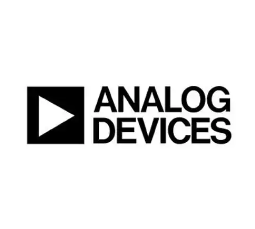**AD5306BRU: A Comprehensive Guide to Maximizing Performance in Precision DAC Applications**
The AD5306BRU from Analog Devices represents a pinnacle of integration and precision in the world of digital-to-analog converters (DACs). This 8-bit, 6-channel voltage-output DAC is engineered for applications demanding high accuracy, stability, and minimal noise. To fully leverage its capabilities, a deep understanding of its operation and the surrounding system design is paramount. This guide provides a detailed roadmap for maximizing performance in your precision application circuits.
**Understanding the Core Architecture and Key Specifications**
At its heart, the AD5306BRU combines six DACs, precision internal references, and output buffers into a single TSSOP package. Its **on-chip 2.5V, 5ppm/°C reference** is a critical feature, providing the stable foundation required for accurate conversion. Relying on this internal reference simplifies design and saves board space, but understanding its limitations is key. For ultimate precision across temperature, the reference output (VREFIN/VREFOUT) can be overdriven with an even more stable external reference voltage.
Key specifications that define its performance include:
* **Low DNL (Differential Non-Linearity):** Ensures monotonicity, meaning the output voltage always increases with an increasing digital code.
* **Low Glitch Impulse:** Minimizes transient voltage spikes during major code transitions, which is crucial for waveform generation.
* **Low Power Consumption:** Operates with a single 2.5V to 5.5V supply, making it suitable for portable and battery-powered equipment.
**Critical Design Considerations for Optimal Performance**
**1. Power Supply and Grounding Integrity**
The quality of the power supply directly influences the DAC's output noise and accuracy. **Implement robust power supply decoupling** by placing a 0.1µF ceramic capacitor and a larger 10µF tantalum capacitor as close as possible to the device's VDD and GND pins. This provides a low-impedance path for high-frequency noise and stabilizes the supply voltage during current transients. A solid, low-noise ground plane is equally essential to prevent digital switching noise from corrupting the analog output.
**2. Reference Voltage Stability**
The accuracy of any DAC is only as good as its reference. While the internal reference is excellent, for the highest precision across a wide temperature range, **consider using an external ultra-precision reference**. Devices like the ADR445 (5.0V) or ADR439 (3.0V) offer lower noise and better temperature drift (sub-1ppm/°C). When overdriving the internal reference, ensure the external source has sufficient drive capability and is itself well-decoupled.
**3. Managing Digital-to-Analog Crosstalk**
The AD5306BRU features a serial peripheral interface (SPI). Fast digital signals can couple into the analog outputs, creating noise. To mitigate this:

* Keep digital signal lines short and away from sensitive analog traces.
* Use a series resistor (e.g., 22Ω to 100Ω) in the clock (SCLK) line close to the DAC to slow down the edge rate and reduce harmonic content.
* Ensure the digital ground and analog ground are connected at a single, quiet point, typically under the DAC.
**4. Output Buffer Configuration and Load Considerations**
The analog outputs are buffered by on-chip amplifiers. The performance of these buffers is affected by the capacitive and resistive load they drive. **Avoid excessive capacitive loading** (>100pF) directly on the output, as it can degrade the amplifier's phase margin, leading to instability and ringing. For driving heavy capacitive loads or cables, isolate the DAC output with an external op-amp configured as a buffer.
**5. Layout Best Practices**
**A meticulous PCB layout is non-negotiable for precision analog circuits.** Utilize a multilayer board with dedicated power and ground planes. Keep analog traces short, direct, and away from noisy digital lines. Place all critical components (the DAC, reference, and decoupling capacitors) close together on the board to minimize parasitic inductance and loop areas.
**Application Spotlight: Multi-Channel Control Systems**
The AD5306BRU excels in systems requiring multiple precision setpoints. Its 6-channel integration makes it ideal for:
* Industrial process control: Biasing multiple sensors or actuators.
* Automated Test Equipment (ATE): Programmable voltage sources for stimulus.
* Optical networking: Laser diode bias and modulation control.
* Medical instrumentation: Controlling gain stages and calibration voltages.
In these applications, the simultaneous update function (via the LDAC pin) is invaluable. It allows all DAC outputs to be updated at the exact same moment, synchronizing changes across all channels—a critical feature for complex control loops.
**ICGOOODFIND**
The AD5306BRU is a highly capable precision DAC whose performance is heavily dependent on thoughtful implementation. By focusing on **clean power and grounding, stable voltage reference, meticulous management of digital noise, and a strategic PCB layout**, designers can unlock its full potential. It stands as an optimal solution for space-constrained, multi-channel applications where reliability and accuracy are paramount.
**Keywords:** Precision DAC, Reference Voltage, Power Supply Decoupling, PCB Layout, Glitch Impulse
